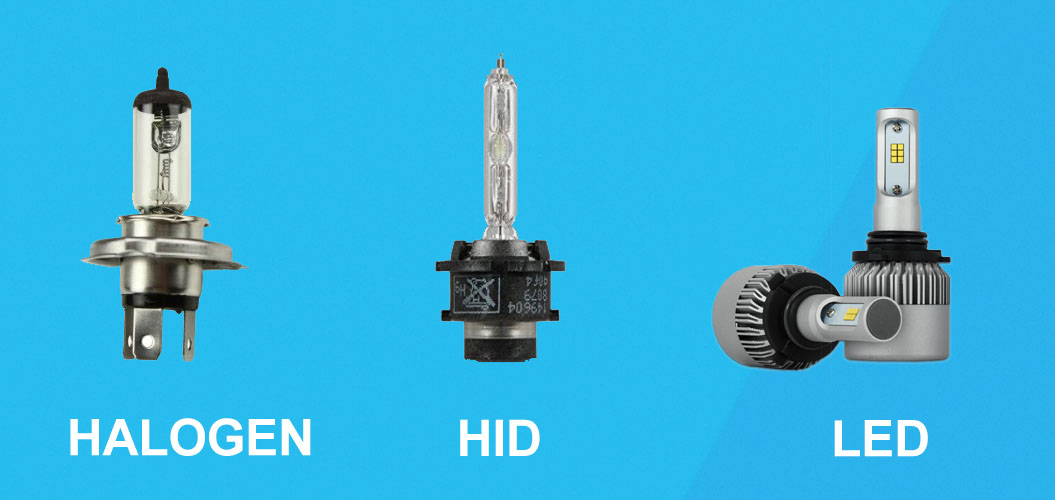5 min read
Summary:
If you are looking to choose the best type of headlight bulb for your car, be aware of the differences between halogen, high intensity discharge (HID), and LED bulbs. Additionally, the secret to maintaining safety and optimum visibility on the road is knowing the manufacturer’s standards and the precise type of bulb required.
Selecting the proper headlight bulb or headlamp for the car is more than simply selecting the right size. When you’re behind the wheel, you need good eyesight and safety.
From the trustworthy halogen bulbs you’ve probably used previously to the cutting-edge realm of laser choices, let’s examine all you need to know about automotive bulbs. Discover what sets each type apart, why one might be the perfect match for your car, and even grab some pro tips on changing them out yourself.
When driving at night or in bad weather, do you find it challenging to see the road? The right bulb can be your best friend on the road. If you’re wondering, “Which headlight bulb is suitable for my car?” You’re not alone. Let’s explore this comprehensive guide together and discover the wide range of headlight bulbs available today. We’ll discuss everything from the traditional halogen bulbs to the latest laser ones, examining their distinctive features and advantages. With this knowledge, you’ll be able to select the ideal headlight bulb for your car with confidence.
Construction Of a Headlight Bulb:
To understand the different bulb types better, let’s first delve into their construction. In today’s automotive market, you may discover a broad variety of light bulb kinds, ranging from traditional halogen lights to modern laser lamps. Each type of bulb is determined by the car’s body form and plays a crucial role in road illumination. A headlight’s housing, which houses the light bulb, plays an important role in its optics.
Source Of Light:
Unlike lanterns that emit light in a specific direction, the source of light in a headlight bulb shines in all directions, sending light particles to the next segment.
Reflector:
The reflector, often made of glass or plastic with a slight dusting of aluminum, comes in various shapes, depending on the headlight configuration and the car’s front design. Its main task is to reflect all the light that hits it and amplify it, providing optimal illumination on the road. Different types of reflectors include parabolic reflectors, free-form reflectors, and lens optics.
Diffuser:
The headlight’s outer portion, which is also constructed of glass, protects it from damage and aids in directing and diffusing its light. For instance, fog lights have a different diffuser shape, directing light downward forward to improve visibility in foggy conditions.
Types Of Headlights:
Understanding the different types of headlights is essential in choosing the right headlight bulb for your needs. The main types of headlights include:
Parking Lights: These lights indicate the vehicle’s dimensions and are located at the front and rear of the car.
Low Beam: Main headlights designed to illuminate the road directly in front of the car. They provide bright illumination but cover a relatively short distance, about 40-50 meters.
High Beam: These headlights shine at a longer distance, typically ranging from 656 to 984 feet. They offer a comfortable light path even at high speeds.
Fog Lights: Additional headlights used in worsened weather conditions, such as snowstorms and fog. When used simultaneously with low beams, fog lights can severely blind other drivers.
Navigation Lights: These lights work during the day to provide additional car identification, ensuring safety even in low-light conditions.

What Types Of Headlight Bulbs Are There?
Now that we have an understanding of the different types of headlights, let’s explore the corresponding headlight bulbs:
1. Halogen Headlights:
Halogen bulbs were the first to appear on the market and have a simple design. They are popular among car owners due to their affordability.
Characteristics:
- Versatility suitable for most cars
- Light output up to 2.1 thousand lumens
- Glass bulbs can cope with both low and high temperatures
- Power ranges from 55 to 75 W
- Lifespan varies from 450 to 1,700 hours, depending on the manufacturer
2. Xenon And Bi-Xenon Headlights:
Xenon lights are a modern alternative to regular halogen bulbs, known for their superior performance.
Characteristics:
- Light output of 3.2 thousand lumens
- Operating life of approximately 3.5 thousand hours
- No heating during operation
3. LED Headlights:
LED headlights are installed on the latest models of luxury car brands and are renowned for their luminescence quality.
Characteristics:
- Snow-white light
- Light output ranges from 4.5 to 5 thousand lumens, minimizing glare for oncoming traffic
- Minimal light scattering
- Power consumption of 6-12 W
- Operating life of approximately 10 thousand hours
4. Laser Headlights:
Laser headlights represent the cutting edge of headlight technology, equipped with an electronic unit to analyze the road situation.
Characteristics:
- Consumption is at least 30% less than counterparts
- Range of illumination of at least 600 meters
- Does not dazzle other drivers
- “Smart” light distribution system
Wrapping Up
Choosing the right headlight bulb is vital for your safety and visibility. While halogen bulbs remain a budget-friendly option, other types like xenon, bi-xenon, LED, and laser provide superior performance in terms of reliability, lifespan, and light quality. By keeping abreast of the latest advancements, you can find the perfect bulb to enhance your driving experience, ensuring safety and clarity on the road. For those looking for a quick and precise solution, this OSRAM tool can simplify the process of finding the perfect bulb for your vehicle.

